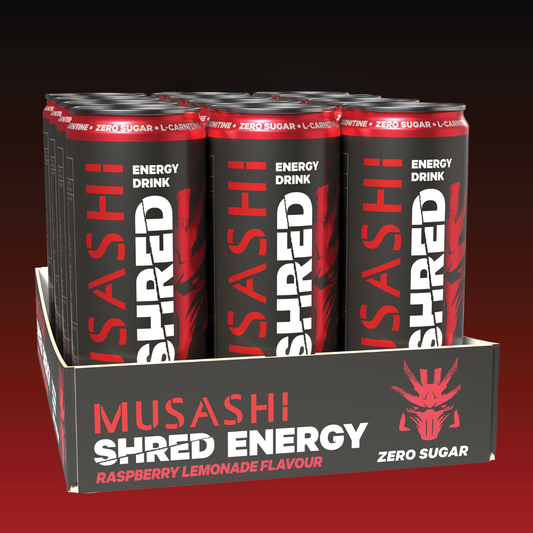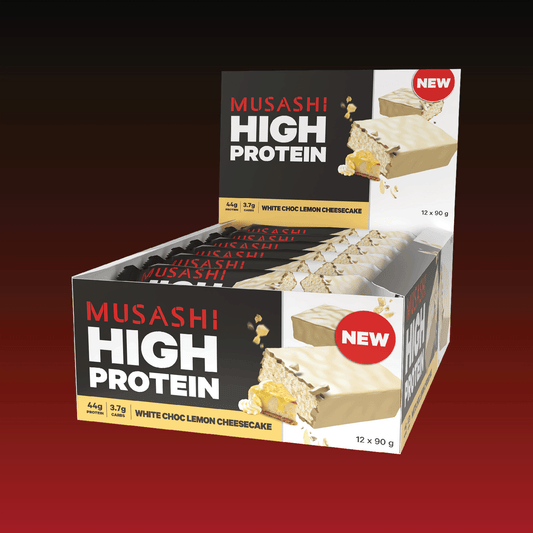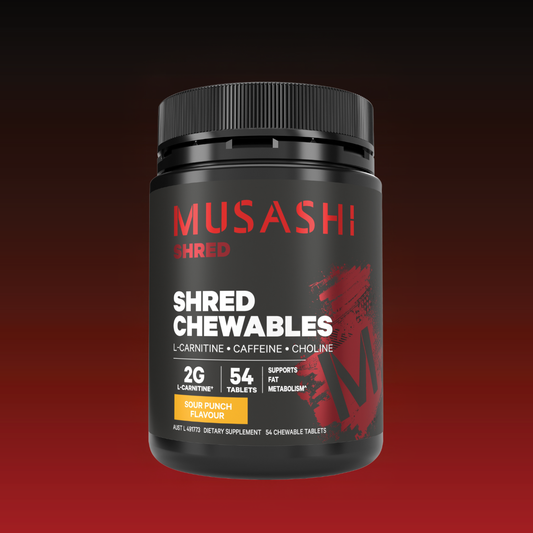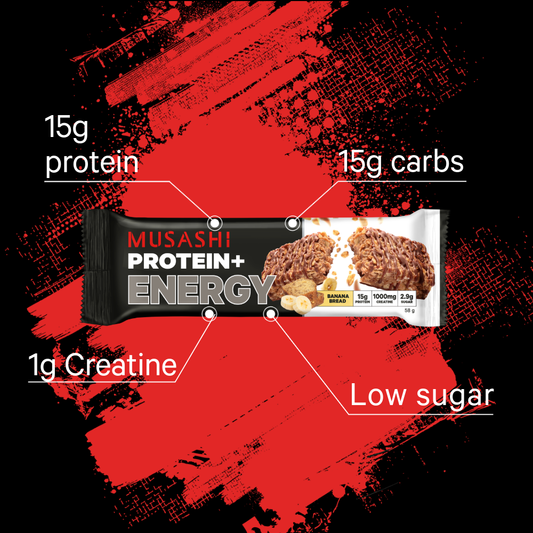FUEL
Fuel your performance with a range of products designed to support energy levels, muscle strength, exercise intensity and endurance. Shop the Musashi Fuel range to deliver the key nutrients required for optimal energy levels throughout training and competition.
SCIENTIFICALLY FORMULATED TO
SUPPORT ENERGY & PERFORMANCE
SUPPORT MUSCLE STRENGTH
INCREASE LEAN BODY MASS
SUPPORT ENDURANCE AND STRENGTH TRAINING GOALS
Musashi sports nutrition supplements undergo a meticulous development process based on decades of experience, starting with comprehensive research to determine effective formulations. Once a product is formulated and optimised, it is produced in controlled facilities to ensure quality and consistency. Finally, before reaching the athletes, supplements are certified by organisations like Informed Sport to guarantee it's free of banned substances.
-

Laboratory and product development experts meticulously research and test ingredients for world-class product quality, taste and efficacy.
-

State-of-the-art facilities ensure precise, consistent, and high-quality production of sports nutrition supplements.
-

Seal of approval: Rigorous testing guarantees our supplements are free from banned substances, ensuring athletes' safety and compliance.
At Musashi, we firmly believe in creating science-backed supplements. We understand that you rely on our products to enhance your performance and overall well-being. That's why we prioritise rigorous scientific research to formulate our products, ensuring precise ingredients, dosages, and formulations that have been proven to deliver results. By choosing Musashi, you can trust that we are committed to your health and success.
-
Essential amino acids (EAAs)
-
Electrolytes
-
Caffeine
-
Citrulline
-
Creatine
-
Beta Alanine
-
Branched-Chain Amino Acids (BCAAs)
-
B-Vitamins
-

-
ENERGY, ENERGY, ENERGY
The FUEL system emphasises the efficient use and replenishment of the body’s 3 primary energy systems: the creatine-phosphagen, anaerobic, and aerobic pathways. It supports optimal glycogen storage in muscles and the liver, ensuring athletes can perform at their peak during both high-intensity, short-duration bursts and longer endurance events.
-
THE SCIENCE OF FUELING
The human body relies on three primary systems to provide energy for different types of exercise. Each of three energy systems is used depending on the duration and intensity of physical activity:
- Phosphagen (ATP) System – provides immediate energy for short bursts of high-intensity activity, such as sprinting and weight-lifting
- Anaerobic System – provides energy for moderate to high intensity exercise, such as 1km intervals or high-rep weight-lifting. This system is fuelled by
- Aerobic System – provides energy for activities that are longer in duration and lower in intensity, such as jogging and cycling
Each system is fuelled by a combination of different nutrients and ingredients, including Creatine, B-Vitamins, Electrolytes, Carbs and Fat. Musashi’s Fuel range includes a variety of products that utilise these nutrients to fuel exercise intensity and optimise performance.
-



































